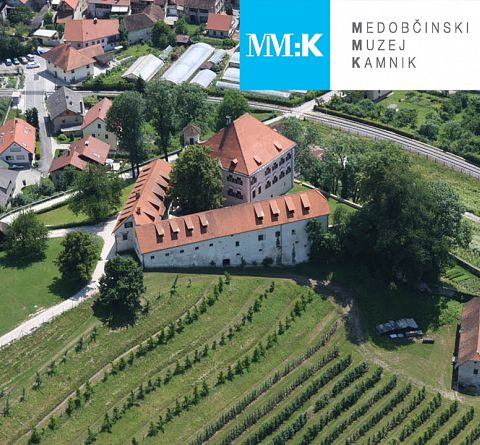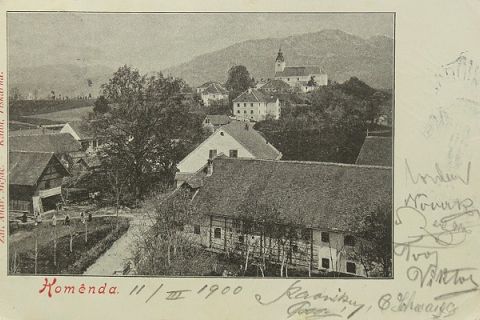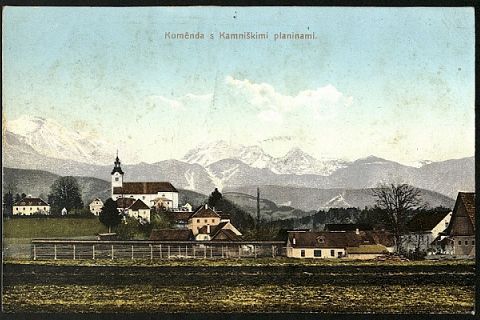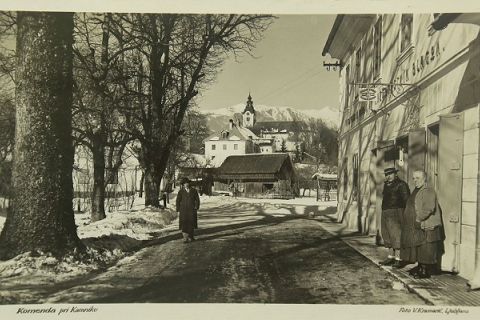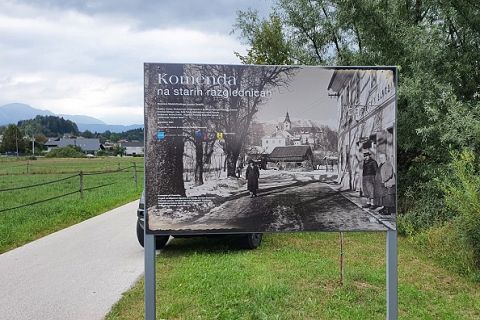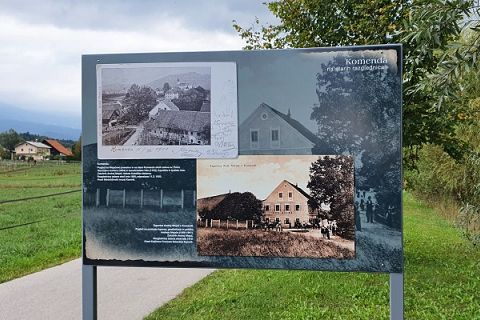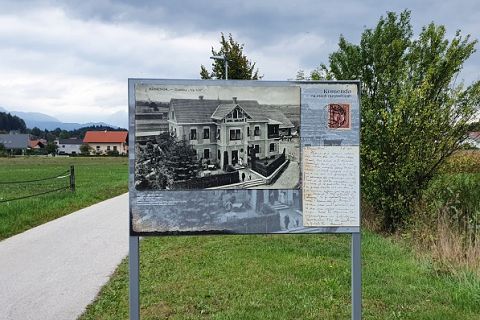Komenda on old postcards
The first postcards were created in the 1860s, mainly due to the development of postal services, the development of photography and printing techniques, the development of tourism and the development of trade. The further development of postcards was greatly influenced by the technical progress of photography and printing. Only cheaper book printing at the end of the 19th century enabled high circulations and rapid spread of postcards. At the beginning of the 20s of the 20th century, offset printing began to dominate, which is still used to print postcards today.
Almost every place in Slovenia had its own postcard. Cities definitely had a larger selection of postcards with panoramas or images of individual public acquisitions, societies and events. Many merchants, craftsmen and innkeepers published their postcards for advertising purposes and also for advertising the place, but they could also be published by professional domestic and foreign publishers, if they were of interest to the wider masses (for example spa and tourist places, pilgrimage churches, larger cities, etc.).
Smaller towns and villages were not so interesting for professional publishers. However, by the Second World War, every Slovenian place had its own postcard, if it had an inn, shop, school, church, castle or railway station, fire station or community centre. Publishers of postcards were usually local merchants and innkeepers.
Postcards provide us with a lot of information. They introduce us to the architectural image of settlements and individual buildings. Our attention is drawn to building facades, signs and inscriptions, often several activities are combined under one roof (shop, inn, post office, etc.). In front of the buildings, people and livestock with harnesses are usually photographed, later bicycles, cars, with this we get information about the costume and mode of transport. With the help of postcards, we can also follow the change of names and the development of the place. Even the backs of postcards tell us a lot, from postmarks and stamps to interesting private notes.
The biggest publisher of postcards in Komenda was the merchant, innkeeper and politician Andrej Mejač (1866-1941). As written in the Kamnik – Komenda biographical lexicon, Andrej Mejač was also active in the public and social life of Komenda. He collected and listed folk habits, local and family history. He was the mayor of Komenda for many years, a member of many committees and the chamber of commerce. He had the first fire station in Komenda built on his land and was the first chief of the Komenda fire brigade, founded in 1894. In 1901, he was elected as a provincial representative for the district of Komenda – Brdo in the Kranj regional assembly.
The exhibition features Komenda postcards from the collections of the Intermunicipal Museum Kamnik and the Library of France Balantič Kamnik, from the end of the 19th century to the 1970s. The oldest Komenda postcards are from the end of the 19th century. They show Mejač’s homestead and in the background the old historic buildings around the church of St. Peter: Glavar’s hospital and beneficiate house, rectory and folk school. Other motifs on the postcards are also similar. They show the panorama of Komenda, and economic activities such as inns and shops, the folk school, Šmid’s manor house with an outbuilding, the newly built community center from 1938, etc.
With the exhibition we wanted to revive the memory of the past of the place and the preservation of cultural heritage. Where sometimes, even such small objects as postcards are a reflection of a certain time, place and relationships between people.



